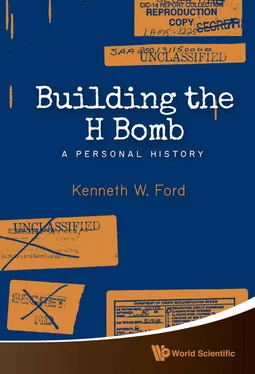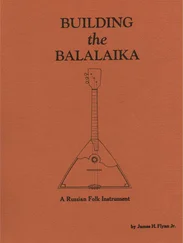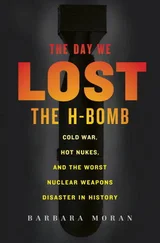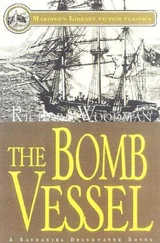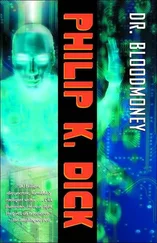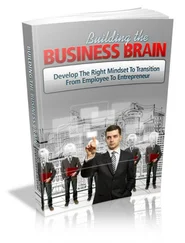The Teller-Ulam idea landed in the midst of numerous other ideas, of varying complexity and varying chance of succeeding. These included “boosting” (having a small container of thermonuclear fuel at the center of a fission bomb to “boost” the fission bomb’s yield); “Swiss cheese” (having numerous pockets of thermonuclear fuel scattered throughout fission fuel); the “alarm clock” (a name Edward Teller and Robert Richtmyer had coined in 1946 {2} 2 Rhodes, Dark Sun, p. 256.
, {3} 3 Teller, Memoirs, p. 242.
for alternating layers of fission and fusion fuel, [5] Fitzpatrick {4} gives the specific date August 31, 1946, for the conception of the alarm clock idea, a date that Teller reportedly remembered because his daughter Wendy was born on that day. This is charming, and, with a bit of a stretch, consistent with Teller’s statement in his Memoirs that he and Robert Richtmyer devised the idea “during the summer of 1946.” Teller gives Richtmyer credit for the name.
and which Andrei Sakharov in the Soviet Union, as we later learned, had separately envisioned and separately christened a “layer cake” in 1948 {5} 5 Holloway, Stalin and the Bomb, p. 298.
); and the “Yule log” (John Wheeler’s macabre name for a cylinder of thermonuclear fuel with no limit on its length or on its explosive power). Behind these lay the basic idea that had been around for nearly a decade and on which we were working assiduously at the time. That idea, known as the “Super” (and later as the “classical Super”) was simple in concept but maddeningly difficult to model mathematically, so that there was no sure sense of its potential. At the time of the Teller-Ulam idea, however, there were more reasons for pessimism than optimism about the prospects of the classical Super. Calculations [6] Calculations at the time were carried out mainly by people wearing skirts and blouses operating Marchant, Monroe, and Friden calculators. They were called “computers.” Understandably, we often called them computresses. The nearest thing to a modern computer was a modified IBM accounting machine known as a card-programmed calculator (CPC). Computers as machines with internally stored programs came later—but not much later. I will return in Chapter 9 to a discussion of some of the “Super” calculations that were carried out when computers were still people and in Chapter 15 to calculations carried out on the true ancestors of modern computers.
kept suggesting that igniting the fuel, even with a powerful fission bomb, and even with a good deal of highly “combustible” tritium mixed in, would not be easy, and that even if it were ignited, it would probably fizzle rather than propagate. A homeowner trying to get a fire started in a fireplace with wet logs and inadequate kindling can relate to the difficulty.
So the Teller-Ulam idea landed in our midst not as “just” another idea—it was special—but also not as a lone idea where there were none already. It was like a new sapling introduced into a nursery, not like a palm tree miraculously delivered into the desert. We thought, “Now there is an idea with merit,” and we started exploring its consequences at once—without immediately abandoning other ideas. As it turned out, the more we calculated, the more promising the new idea looked. Within three months, it had become the idea and was endorsed by the General Advisory Committee of the Atomic Energy Commission as the route to follow.

Up until February 1951, when Ulam approached Teller with an idea about imploding thermonuclear fuel and Teller realized (or, as he later claimed, recalled {6} 6 Teller, Memoirs, p. 316.
) that radiation was the best thing to do the imploding, everyone working on H-bomb design in the United States assumed that the Super would have to be a “runaway” Super, a device in which the temperature of the material would have to “run away from” the temperature of the radiation. Otherwise, it seemed, the radiation would soak up too much of the energy and there wouldn’t be enough left to ignite the thermonuclear fuel and keep it burning. What could change this bleak prospect, Ulam and Teller realized, would be great compression of the material. It was this February meeting and its insight that led to the Teller-Ulam report of March 1951 and to the new direction in H-bomb design.
There were two insights that flowed from the Teller-Ulam discussion. The first was that thermal equilibrium—that is, having the matter and the radiation at the same temperature—could be tolerated if there was enough compression. Occupying less volume, the radiation would soak up less of the total energy. More energy would be left to heat the matter and stimulate its ignition and burning. Up until then, those of us working on the Super accepted the idea that thermal equilibrium would be intolerable because of the excessive “loss” of energy to radiation. And we accepted an argument Teller had made {7} 7 Teller interview with Jay Keyworth, Sept. 20, 1979 (Teller “Testament”), pp. 14–15, copy kindly furnished by Richard Garwin; also Teller, Memoirs, p. 312.
that compression would not help. Teller had pointed out that although compressing the thermonuclear fuel increases its reaction rate, it also increases, and by the same factor, the rate at which the matter radiates away energy. So there was no net gain, he had argued, from compression. But that argument posits a runaway Super, which was our mindset at the time. Once equilibrium is established, matter is not “losing” energy to radiation, it is just exchanging energy with radiation, gaining as much as it is losing. If you jump into the North Atlantic, you lose energy because your temperature is higher than that of the water, and you will soon be drained of your energy. If instead you jump into a hot tub, energy flows equally back and forth between you and the water as you remain in equilibrium, and you can bask there all afternoon.
I have not found in the written record any sure evidence that Stan Ulam had in mind this insight about equilibrium when he came up with the idea that the thermonuclear fuel should be compressed. Nor do I remember him explicitly mentioning it at the time. Yet I have to assume that he did have it in mind. Otherwise there would have been no good reason to argue for compression. He had already done quite a lot of work on the runaway Super and knew its disconcerting inability to hang onto enough energy to keep a reaction going. He most likely knew, also, the Teller argument that for a runaway Super, compression would not help.
Teller, in the now-famous conversation with Ulam, apparently did realize very quickly, despite his earlier arguments to the contrary, that compression could be a key to success. In his memoirs, written many years later {8} 8 Teller, Memoirs.
(from which I quote in the next chapter), he says that Ulam’s idea was “far from original” and that, for the first time he [Teller] didn’t object to it. {9} 9 Teller, Memoirs, p. 316.
He doesn’t tell us why he didn’t object, an odd omission given his previous rejection of the idea. In the same paragraph, in a further put-down, Teller says that Ulam did not actually understand why compression was a good idea.
Our understanding of this meeting is murky indeed despite the clarity of the conclusion that flowed from it. Did Ulam come in with a full understanding of why compression might be the key to success in designing an H bomb? We don’t know. Had Teller ever seriously entertained the idea of compression before? We don’t know. (In later writings, Teller claims to have had the idea before Christmas 1950 {10} 10 Teller, Memoirs, p. 314.
and also about February 1, 1951. {11} 11 Teller, Legacy, p. 50.
These claims are dubious, especially in light of his own account of the meeting with Ulam, {12} 12 Teller, Memoirs, p. 316.
and in light of my own recollection that no breakthrough idea occurred before late February 1951.) What we do know is that out of the meeting came the successful idea of the “equilibrium Super,” in which compression is so great that the huge amount of energy soaked up by radiation in equilibrium with matter is tolerable.
Читать дальше
